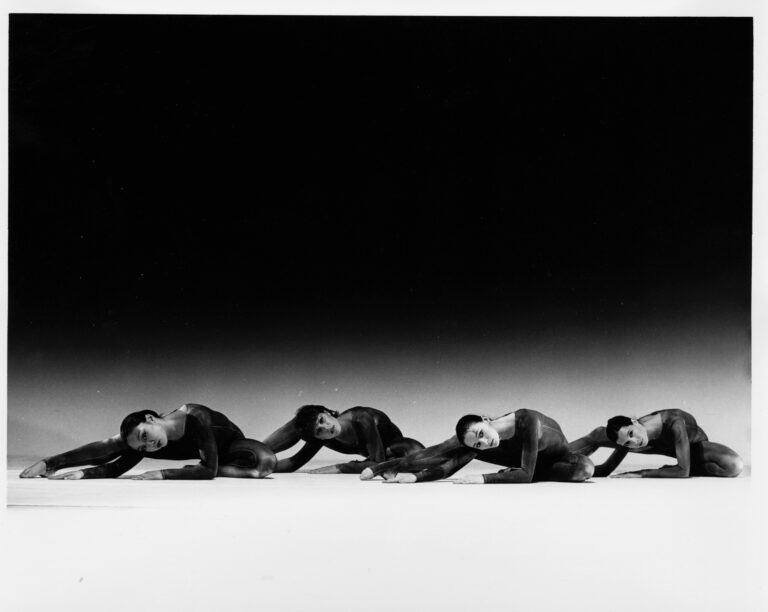Caring for Your Photographs: What’s causing…?
Maud Allan c. 1903
your photographs to fall apart
The DCD holds many thousands of photographs. We are responsible for their care and long term preservation. Over a series of blogs you can discover how we do this. In this blog we will look at what causes your photographs to fall apart by looking at each one of the 10 agents of deterioration.
The ten agents of deterioration
- Humidity
- Temperature
- Light
- Chemical
- Pests
- Neglect
- Physical force
- Fire
- Water
- Theft and vandalism
Humidity
Humidity is the measure of the amount of moisture in the air, more accurately known as Relative Humidity [RH]. RH is the most important factor in what causes your photographs to fall apart. All of the processes which cause your photographs to age and and become unusable require moisture. A high RH (damp) speeds up the rate at which your photographs fall apart.
High RH can also:
- lead to mould growth
- cause photographs to stick together – called BLOCKING
- cause boards to warp and distort
A low RH (dry) can:
- make photographs brittle
- cause photographs to crack
If the amount of moisture in the air is constantly changing this is worse than if the amount of moisture is static. A constantly changing level of moisture in the air means that your photographs are constantly expanding and contracting, putting them under a lot of stress.
Temperature
Temperature controls how fast your photographs fall apart. The warmer it is, the faster your photographs will deteriorate.
As with RH, a static temperature is better than one which is constantly changing.
You may not realise it, but a higher temperature speeds up the life-cycle of some insect pests; so, the warmer it is, the more insect pests you could have feasting on your photographic collection!
Light
All light will damage your photographs, but light with high concentrations of blue and Ultra Violet [UV] such as daylight and unfiltered fluorescent light is the most damaging.
Light causes fading. Light also causes the papers and boards that your photograph may be printed on or mounted in to discolour and become brittle.
Light damage is cumulative and cannot be reversed.
Chemical
This means pollutants. There are two types: GASEOUS and PARTICULATE.
PARTICULATE = dust, skin, hair, fibres, soot and pollen which cause dirt, abrasion. These can attract insects and moulds because they provide a food source for them.
GASEOUS = gases from aerosols, paints, glues and air fresheners. These gases can cause fading and discolouration of your photographs. They make the paper and card supports brittle.
Pests
Your photographs provide food for moulds and insects like silverfish or carpet beetles. Photographs are at risk from moulds, insects, rodents and birds and their droppings. These pests can cause complete loss of the image, discolouration and staining and can decimate a collection.
©Lorraine Finch
Neglect
Your photographs may be in their original card boxes or brown paper envelopes. They may be stored in the ‘suitcase on top of the wardrobe’ or in a plastic bag in a cupboard. These boxes, envelopes and plastic bags are made from materials which were never intended to be used for long-term storage. For example:
- boxes and papers will become acidic over time accelerating the rate of deterioration
- boxes and envelopes will also fall apart over time, the resulting debris will drop all over your photographs adding to dirt and abrasion
- some plastics as they age produce acids including hydrochloric acid
Additionally, these boxes, envelopes and bags, may have been nice and strong when they were first used but they will lose their strength as they age. The last thing you would want when you pick up a heavy box or envelope is for the bottom to collapse, or for the side to detach.
It’s also important to think about what may be enclosed with your photographs, such as paper clips, rubber bands, sticky tape and plastic envelopes. These can seem innocuous, but can cause irreversible damage to photos including; rust stains, yellowing and discolouration.
@Lorraine Finch
Physical force
This is all about how you handle your photographs, handling causes considerable wear and tear to your photographs. Photographs are easily damaged when handled. They may be broken, chipped and cracked if they are on glass. Poor handling can cause tears, losses (where whole sections of the image are detached) and scratches to photographs.
©Karen Jamieson
Fire and Water
It’s best to put these together as ‘risk to your collection’, so ‘Disaster Planning and Preparedness’.
The threat that fire poses to your photographs is obvious. There have been numerous examples recently of the damage that fire causes to historic objects and buildings.
In terms of water, this could be a burst pipe; the result of a fire (to extinguish it); heavy rainfall or a tidal surge.
Getting a reaction
One last point about what causes photographs to fall apart, and that’s the photographs themselves. Photographs involve complex chemistry which doesn’t stop reacting. For example, albumen prints contain sulphur which causes them to yellow. Cellulose nitrate negatives produce nitric acid which causes the plastic to become brittle, bleaches out the image, and eventually causes the complete loss of the negative.
And finally …
In our next blog we’ll look at how you can reduce the impact of the 10 agents of deterioration, and extend the life of your precious photographs.
To have a look at more of the photographs at the DCD, head over to DCD Discover
If you have any questions about the preservation of your photographs, we’d be happy to help. Please contact Lorraine
Cover image: Terminal City Dance, mid 1970’s. Karen Jamieson Archives. ©Karen Jamieson




